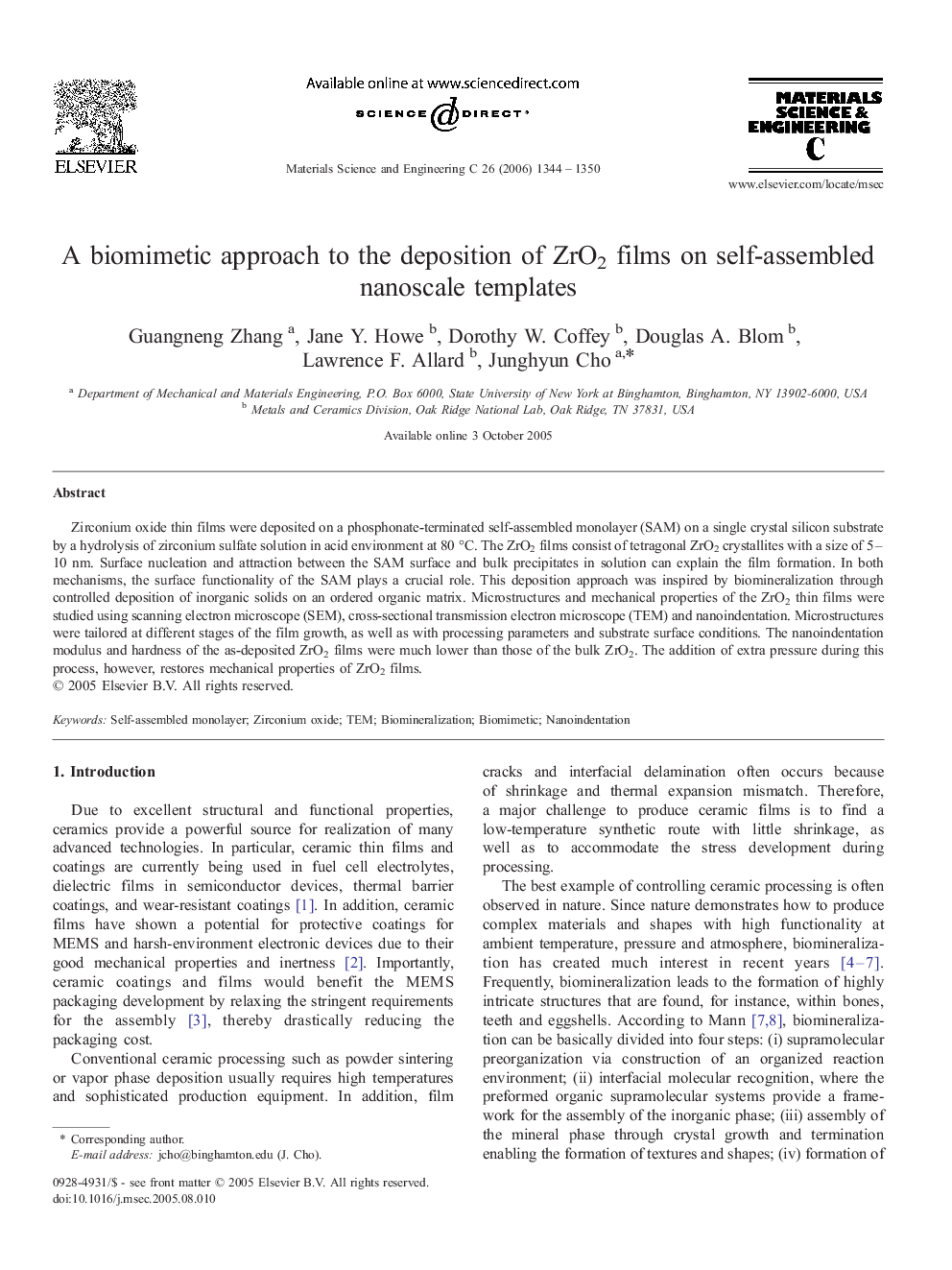| Article ID | Journal | Published Year | Pages | File Type |
|---|---|---|---|---|
| 1431149 | Materials Science and Engineering: C | 2006 | 7 Pages |
Zirconium oxide thin films were deposited on a phosphonate-terminated self-assembled monolayer (SAM) on a single crystal silicon substrate by a hydrolysis of zirconium sulfate solution in acid environment at 80 °C. The ZrO2 films consist of tetragonal ZrO2 crystallites with a size of 5–10 nm. Surface nucleation and attraction between the SAM surface and bulk precipitates in solution can explain the film formation. In both mechanisms, the surface functionality of the SAM plays a crucial role. This deposition approach was inspired by biomineralization through controlled deposition of inorganic solids on an ordered organic matrix. Microstructures and mechanical properties of the ZrO2 thin films were studied using scanning electron microscope (SEM), cross-sectional transmission electron microscope (TEM) and nanoindentation. Microstructures were tailored at different stages of the film growth, as well as with processing parameters and substrate surface conditions. The nanoindentation modulus and hardness of the as-deposited ZrO2 films were much lower than those of the bulk ZrO2. The addition of extra pressure during this process, however, restores mechanical properties of ZrO2 films.
